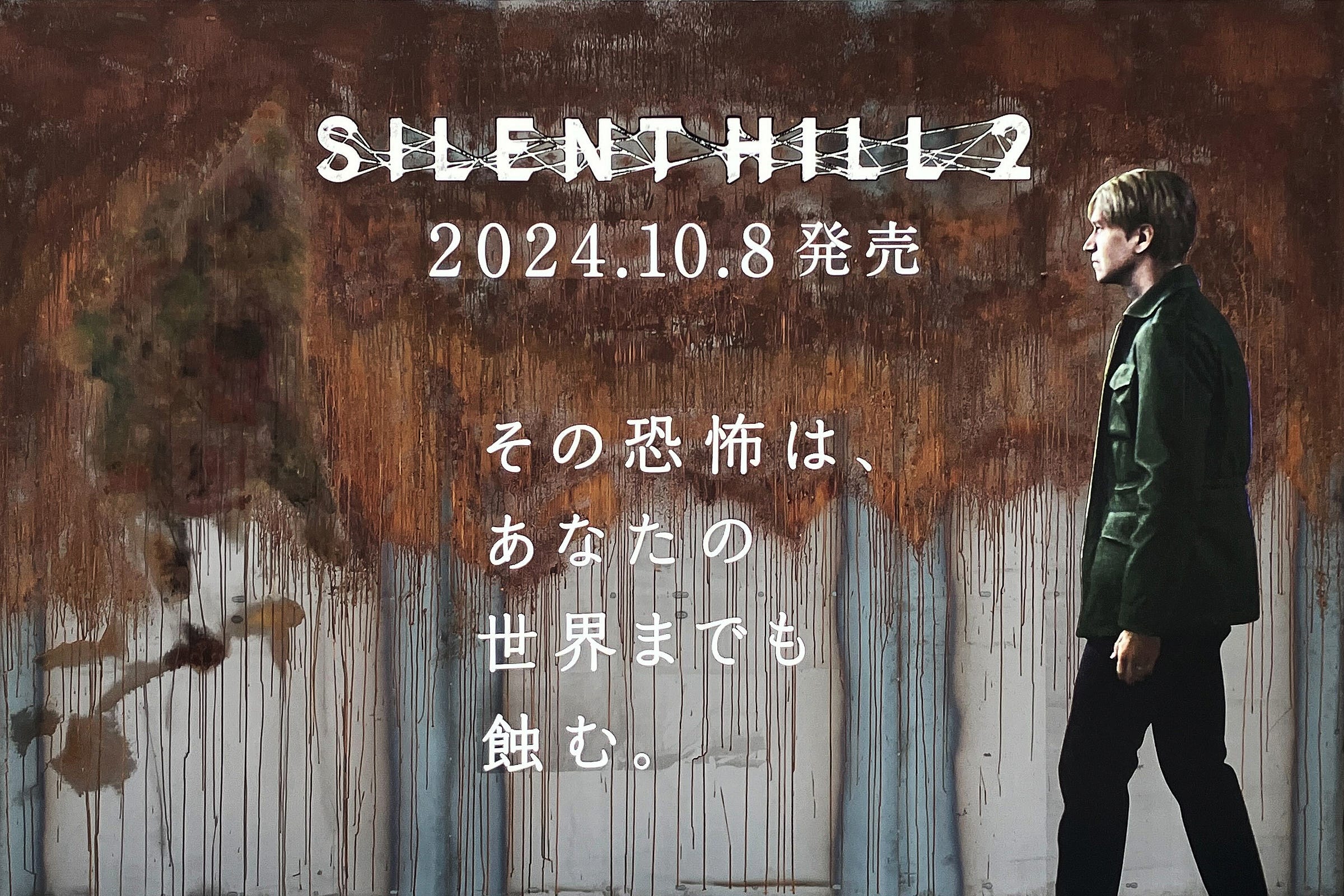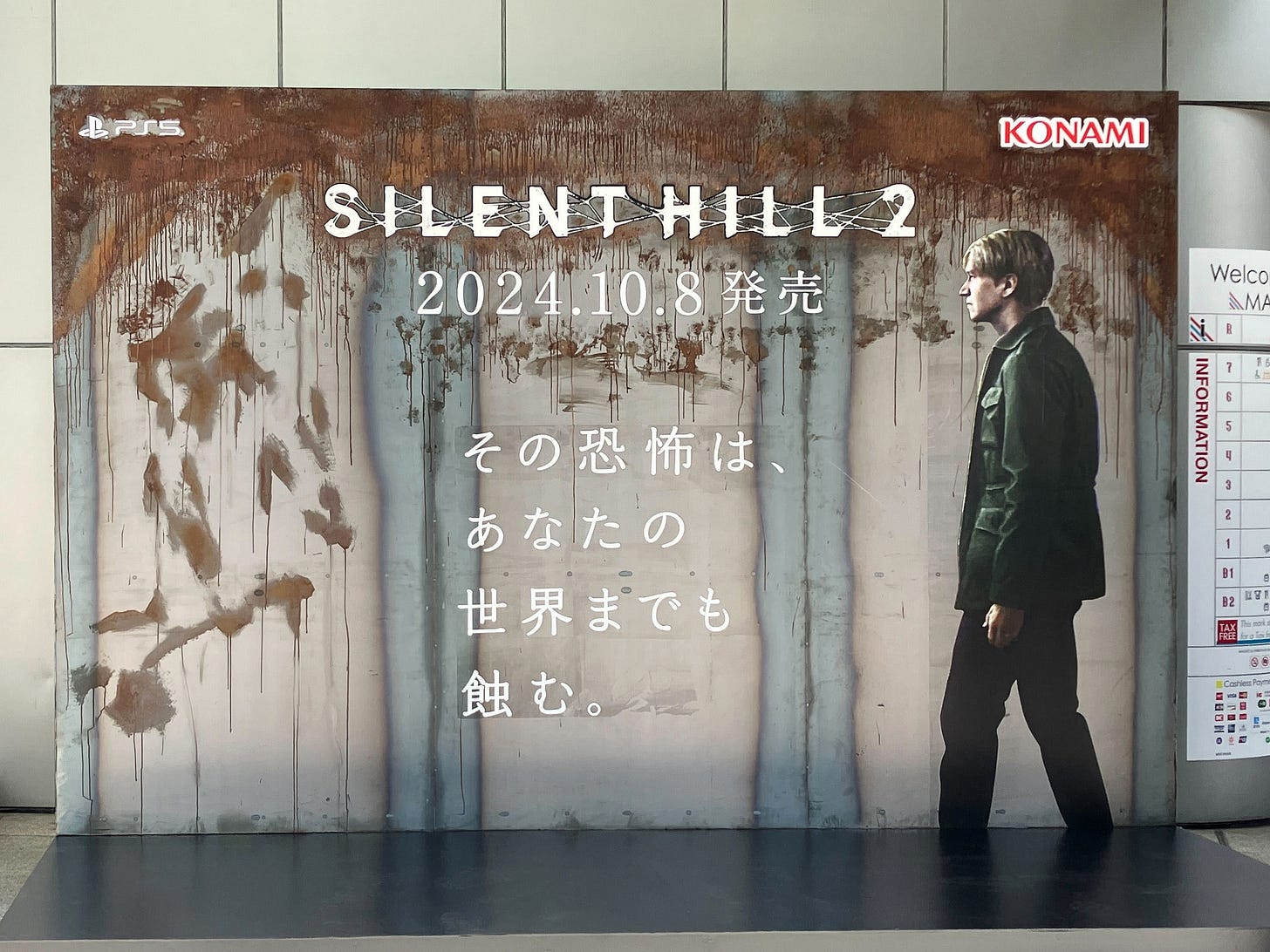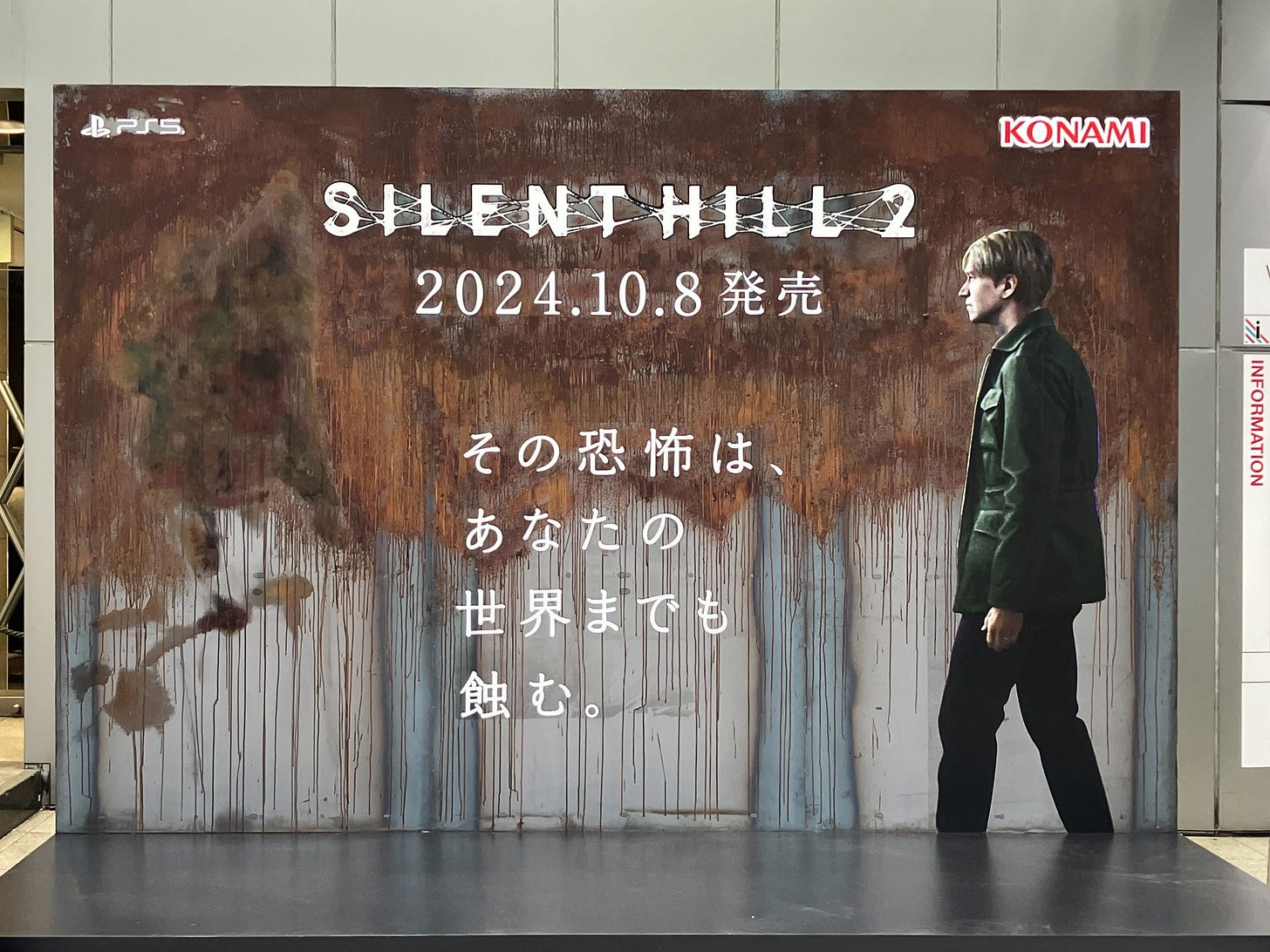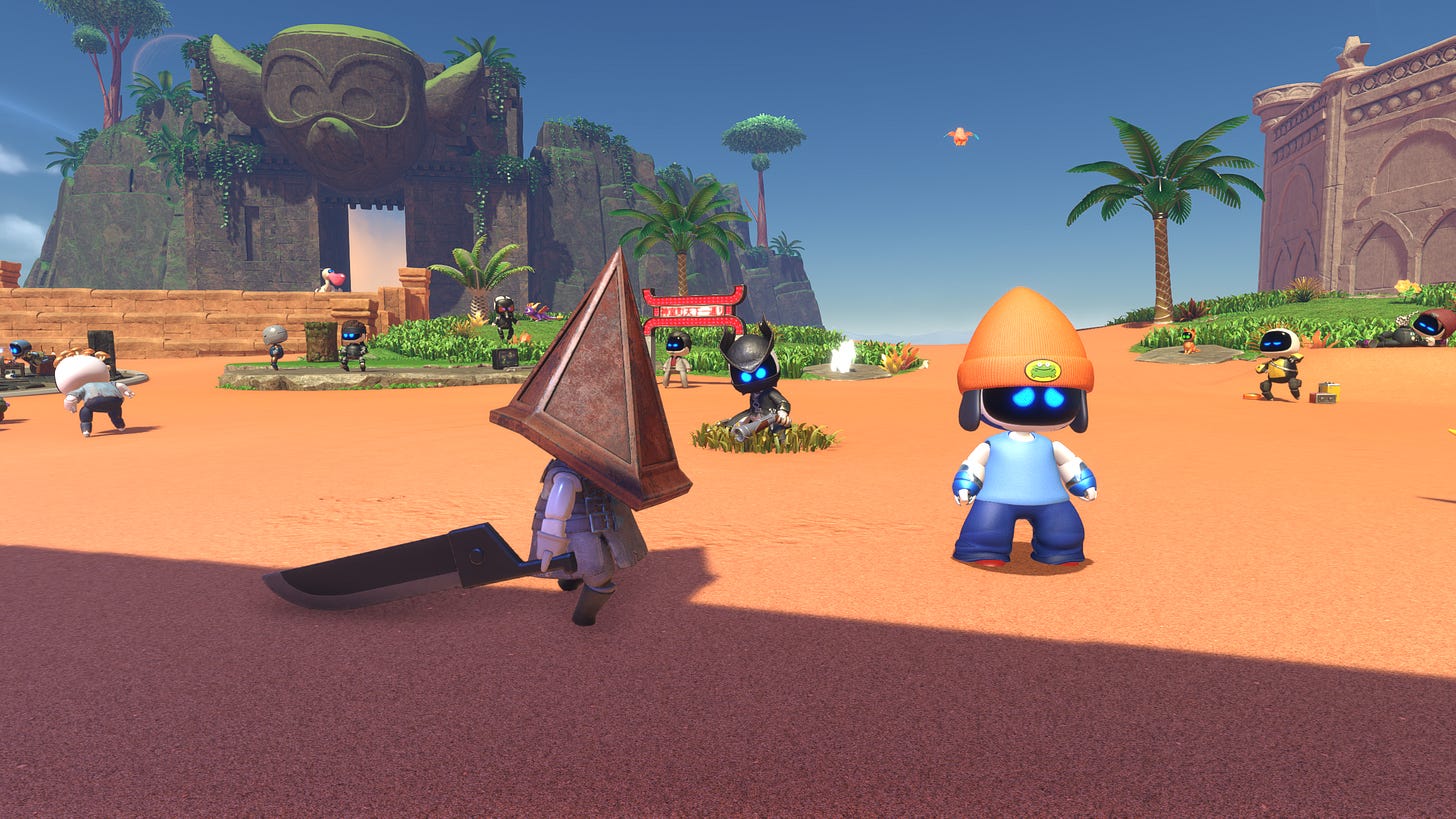We’ve got a very trippy and horrifying billboard from by way of Tokyo, and some final thoughts on Astro Bot, but before that a not-so-quick update!
This week we’re starting yet another chapter in our real-time experiment that is MBH4H: We’re moving to more of a “little and often” strategy. A term often used as a maxim to describe the best approach to exercise, except in this case we’re applying it to our writing. In other words, we are (no, really this time) going to start blogging again baybee!
Why now you may ask? Well, as we shift how we write our MBH4H Week in Review, we’ve been finding ourselves writing about fewer topics but with stronger points of view—in other words, blog posts. We came to realize that we’ve often buried two or three (sometimes more) blog posts under a 3,000-word essay; posts that would have more space to breathe if they were a little longer, published in their own right, and given the opportunity to find their own audiences. And given we would typically find these ideas throughout the week, it also seemed silly to simply wait and publish them on an arbitrary date, rather than putting them out when the idea first struck.
In addition to writing shorter blog posts, and as you’ve already seen in the past several issues, we’re going to focus even less on AI specifically and more on human creativity in all its forms. We want to move our coverage of AI to the background of what we’re writing about, to use it as a context for our primary aim, which is to better understand what defines, explains or simply celebrates the art of human creativity in the era of AI.
In the four months we have been writing on MBH4H, we’ve both come to the inexorable conclusion that whenever we’ve written about AI to date, the vast majority of our coverage has about the business of AI; the companies behind this new technology and their often (borderline all the time tbh) shitty behavior. That’s not a space we’re comfortable with and, frankly, have little interest in covering the minutiae of. We'd rather leave that to the likes of Ed Zitron and others who are way better at it than we are.
What most interests us is the creativity we’re seeing humans employ to design and make great video games, or movies, or TV shows, or paint gorgeous images or shoot incredible photos. We’re both optimists at heart and want to celebrate what it means to be creative in the 2020s and (hopefully) how we can all make a living in the process.
Of course, for some creatives, that will involve using AI, and we can’t wait to talk to them about how and why they do. Some of that coverage will be longer than a blog post. We’re still going to write long form essays—as we’ve said before, we often can’t help ourselves—and when we do, we'll continue to publish them on a Thursday.
But back to today. This, then, is the last of our Week in Review posts in the current form and is, instead, the first of our new blog experiments. The only problem is, this intro is already well over 300 400 500 words so we’ve failed at the first attempt. Something something if we had more time, we would’ve written you a shorter letter… whoever said that was quite right.
Oh well, it only goes to prove that though the idea of blogging may be simple, it doesn't mean it’s easy. We’ll try harder to write less next time. Onwards.
—James & Ross
“That fear will eat into your world as well”
Tokyo's Shibuya crossing is known as the world's busiest pedestrian crossing, and for the past several days, this ad for the Silent Hill 2 remake has been a stone's throw away from the pedestrian scramble. I've become obsessed with this display, thanks in part to friend of the newsletter Steve Haske, who has been popping by every so often to see how it (d)evolves. According to this writeup from Siliconera, every day between September 18 and 24, the poster's background becomes slowly overtaken by rust as a demonic presence starts to form. (Mild spoiler here, but as in the original 2001 game, James Sunderland—the hero seen on the right, is pursued by the monstrous Pyramid Head, a brutal antagonist that has become iconic with the Silent Hill series; that shape slowly forming on the left will almost certainly become him by the end.) The text, if you're curious, reads, “That fear will eat into your world as well.”
It's a slow-burning trick, but if you're looking to grab the attention of literally hundreds of thousands of people, many of whom are making repeat trips and daily commutes. If you find yourself near MAGNET by SHIBUYA building over the next few days, please take photos and let us know!
Notably, the final reveal also marks the start of Tokyo Game Show, one of the largest gaming conventions in the world and a veritable mecca for local fans and international press alike to get a glimpse of the next several years in gaming. We’re very much looking forward to everything we can glean from afar—especially anything related to Hideo Kojima’s Death Stranding 2, a series and a viral marketing campaign that is like nothing else out there. —Ross
Final thoughts on the wonderful Astro Bot, the best branded content of the year
There were several exceptional games to launch in the past several days, including the visually stunning Plucky Squire and the stunningly ambitious UFO 50—I'll almost certainly have more to say about both of those in the very near future—but instead of playing something new this week, I spent my time finishing Astro Bot. And much like the media cycle around this game, my opinion has gone from unapologetic glee to something a bit more nuanced.
If you missed last week, here's the gist: Astro Bot is a new PlayStation 5 game that aims to be Sony's equivalent to a Super Mario game, and for the most part it succeeds. The game takes very simple mechanics—punch, jump, double-jump with laser boots—and from that basic vocabulary builds out a world of fascinating gameplay across clever and colorful dioramas.
My partner did not grow up playing video games and has struggled to learn how to move in a 3D environment and how to understand some of the "shorthand" you develop over a lifetime of play (to give one example: if you see a seemingly random coin just to the side, it's probably worth exploring what secrets lie behind this alternate route). Astro Bot is maybe the second platforming game that she was able to beat largely on her own, with the early levels handholding some of the fundamental aspects of 3D gaming before it ramped up difficulty over the course of two dozen hours. (The excellent Kirby and the Forgotten Land would be the first.)
Outside of the main path, Astro Bot features dozens of challenge levels that also ramp up difficulty but to a much, much larger degree: these are the graduate-level classes for showing off your platforming aptitude, and this is where I've had an absolute thrill in between a few "pickup moments" when my partner needs help on the main path.
So the gameplay is something I absolutely adore, but it's the branded content aspect where I've soured maybe just a little. Astro Bot is a love letter to PlayStation's gaming history, and it fills every inch of screen real estate with both explicit Easter eggs to past PlayStation titles as well as implicit allusions to several gameplay tropes. Hell, the whole driving force behind the game's story is that you're rebuilding a PlayStation 5 console, which in this world is also a ship for interstellar travel. Like many of the other Great Moments in Branded Content History—notably Barbie and Lego Movie, which I also mentioned last week—Astro Bot works by going all-in and using pretty much everything in Sony's proverbial toy chest. And yet by the end—and specifically the end sequence, which I won't spoil—I couldn't help but feel like this game had squandered several moments to not just look back on the gaming's history but also add something new—to draw a line in the sand and show us something we haven't seen before.
I still recommend Astro Bot without any shred of reservation, but I do think something that's become more apparent is how stuck in the past the game is—and for all the comparisons, the flagship Super Mario games have all been defined by a willingness to try something excitingly novel. (Hell, they built an entire Mario game out of a backpack squirt gun.) All of this is to say it's clear that Astro Bot is a PlayStation tentpole here to stay, but now that it’s here, I'm hoping that the next adventure tries something new. —Ross
In lieu of a new game recommendation from us this week, please check out this wonderful review of UFO 50 from the extremely talented Brendon Bigley.








Begging for weekly “how I use this” AI ideas from creatives! From someone who often feels utterly lost :)